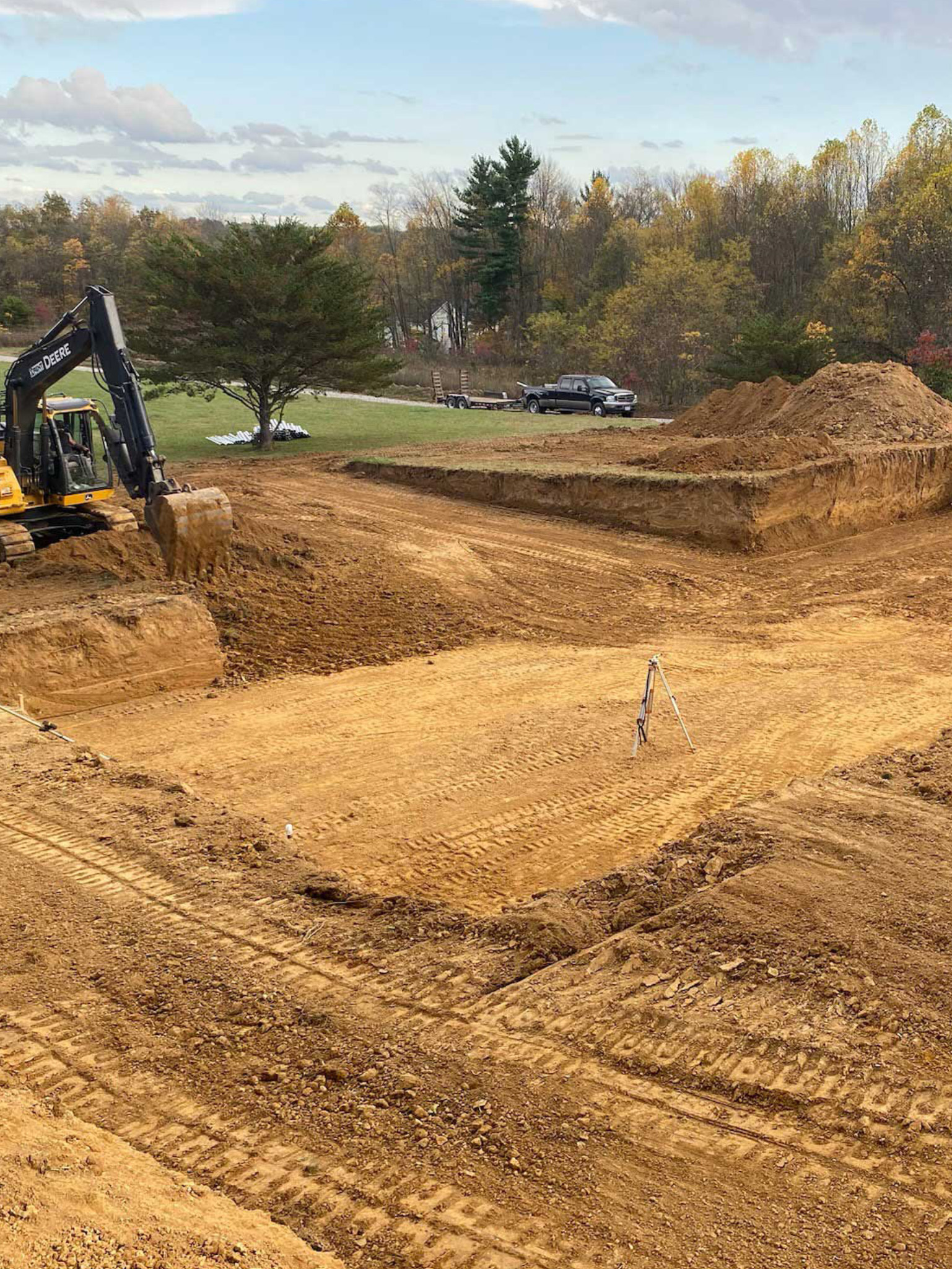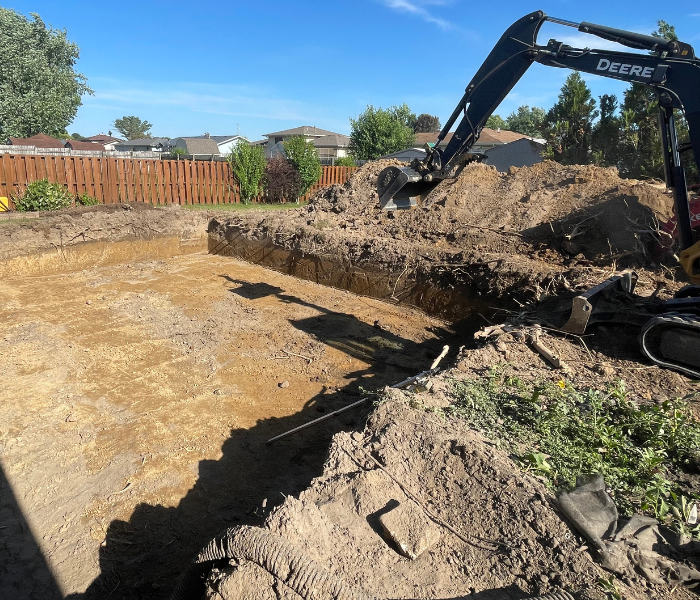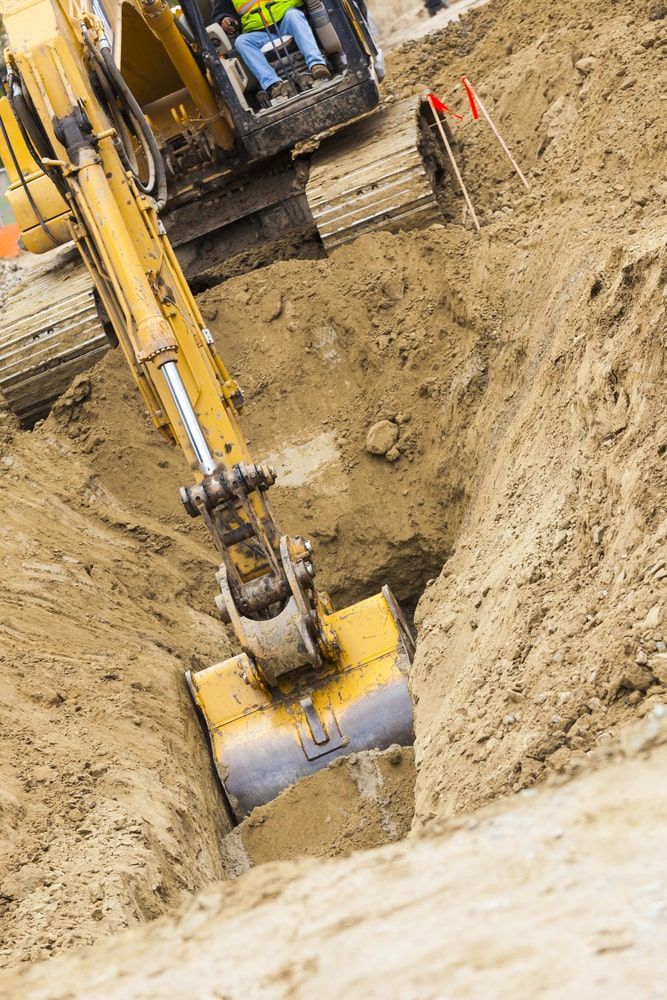Affordable Lancaster Excavation - High Quality Excavation at Competitive Rates
Affordable Lancaster Excavation - High Quality Excavation at Competitive Rates
Blog Article
Introducing the Art of Excavation: Pro Tips for Safe and Productive Excavating
In the world of excavation, the mastery of risk-free and productive excavating is an art form that calls for accuracy, adherence, and understanding to well-known methods. As soil is turned and earth is relocated, the details of excavation reveal themselves, demanding an eager understanding of equipment, dirt composition, safety and security procedures, and environmental considerations. The experience required to browse these components properly can imply the distinction in between an effective excavation task and a prospective calamity. By untangling the layers of this complex procedure, a world of understandings and strategies awaits those seeking to raise their excavation abilities to new elevations.
Significance of Appropriate Equipment
To make certain the safety and security and effectiveness of any kind of excavation job, using the proper equipment is paramount. Excavation tasks differ in scope and intricacy, ranging from little household landscape design work to massive building undertakings.
These versatile makers come in numerous dimensions to suit different project requirements. Tiny excavators are optimal for smaller tasks, while larger excavators take on much more substantial tasks successfully.
In addition to excavators, various other critical equipment includes dump plates, vehicles, and bulldozers. Discard trucks are vital for removing and transporting excavated products, while plates are used for excavating slim and deep trenches. Bulldozers master tasks that call for pushing huge amounts of soil or particles. By investing in the ideal equipment, excavation jobs can be completed safely, on time, and with accuracy.
Comprehending Dirt Make-up
An extensive grasp of soil make-up is basic for performing excavation tasks with accuracy and safety and security. Comprehending the different sorts of dirt is essential as it straight impacts excavation techniques, tools selection, and general project effectiveness. Dirt structure normally contains four primary elements: sand, silt, clay, and raw material. Each part has unique homes that affect exactly how dirt responds to excavation processes.
Sand fragments are the largest and offer good water drainage yet supply little communication. Silt fragments are smaller than sand yet bigger than clay, using moderate water drainage and cohesion. Clay particles are the tiniest and provide high cohesion but bad drainage. Raw material, such as rotting plant product, affects dirt fertility and stability.
Before beginning excavation, performing dirt examinations to identify its composition and features is necessary. This details assists in picking the proper devices, applying safety and security measures, and establishing excavation methods tailored to the details dirt conditions - dump truck companies in ohio. By recognizing soil structure, excavation professionals can improve project results while guaranteeing safety and security and adherence to ideal practices
Safety And Security Procedures and Procedures
Recognizing dirt make-up is the keystone upon which precaution and procedures for excavation projects are built, guaranteeing the well-being of workers and the success of the undertaking. When it concerns safety during excavation, there are several key actions that must be carried out to mitigate threats and prevent accidents.
First and leading, before any digging begins, a detailed assessment of the website must be performed to determine any potential dangers such as underground utilities, unstable soil problems, or neighboring structures that can present a danger. It is crucial to have a qualified person look after the excavation procedure to guarantee Read Full Article that all safety procedures are adhered to purely.
Moreover, all employees involved in the excavation needs to be appropriately educated in risk-free excavating practices and the appropriate operation of tools. By adhering to these security procedures and methods, excavation tasks can be completed effectively and without incident.
Effective Excavation Preparation
When beginning on an excavation job, precise planning is vital to ensure efficiency, security, and effective results. Efficient excavation planning includes a number of vital actions that are crucial for the smooth implementation of the job.
Once the website assessment is complete, the next step is to create a clear timeline and schedule for the excavation activities. This includes determining the series of jobs, devices demands, and workforce allocation. Proper organizing aids stay clear of hold-ups and makes sure that the project remains on track.

In addition, interaction among all team members is extremely important during the planning stage. Clear instructions, regular updates, and efficient coordination are vital for an effective excavation project. By investing effort and time in precise planning, excavation groups can substantially improve efficiency, lessen threats, and accomplish successful results.

Managing Environmental Factors To Consider
With enhancing focus on ecological sustainability in building and construction techniques, managing ecological considerations has come to be an essential element my site of excavation jobs. Excavation tasks have the possible to impact the surrounding setting with soil erosion, debris runoff, environment disturbance, and contamination of water sources. To alleviate these risks, it is necessary to apply best practices that prioritize environmental management.

Moreover, appropriate waste monitoring is vital to avoid dirt and water contamination. Applying procedures for the disposal of unsafe products, recycling of waste products, and minimizing the use of unsafe chemicals can significantly reduce the environmental impact of excavation tasks. By integrating these techniques right into excavation planning and implementation, building companies can make sure that their tasks are not only safe and effective but likewise eco accountable.
Conclusion
Finally, mastering the art of excavation calls for a thorough understanding of proper equipment, soil structure, precaution, and reliable preparation. By complying with these standards and considering ecological elements, excavations can be carried out safely and successfully. It is important to focus on safety and efficiency in every digging task to make certain successful end results.
As dirt is turned and earth is relocated, the ins and outs of excavation reveal themselves, demanding an eager understanding of tools, dirt composition, security protocols, and ecological considerations.To make sure the safety and security and performance of any excavation job, using the suitable equipment is vital.A go to these guys thorough grasp of soil structure is essential for performing excavation jobs with precision and security. Recognizing the different kinds of soil is important as it straight impacts excavation approaches, tools option, and general job effectiveness. By recognizing soil make-up, excavation specialists can improve project outcomes while ensuring security and adherence to finest practices.
Report this page